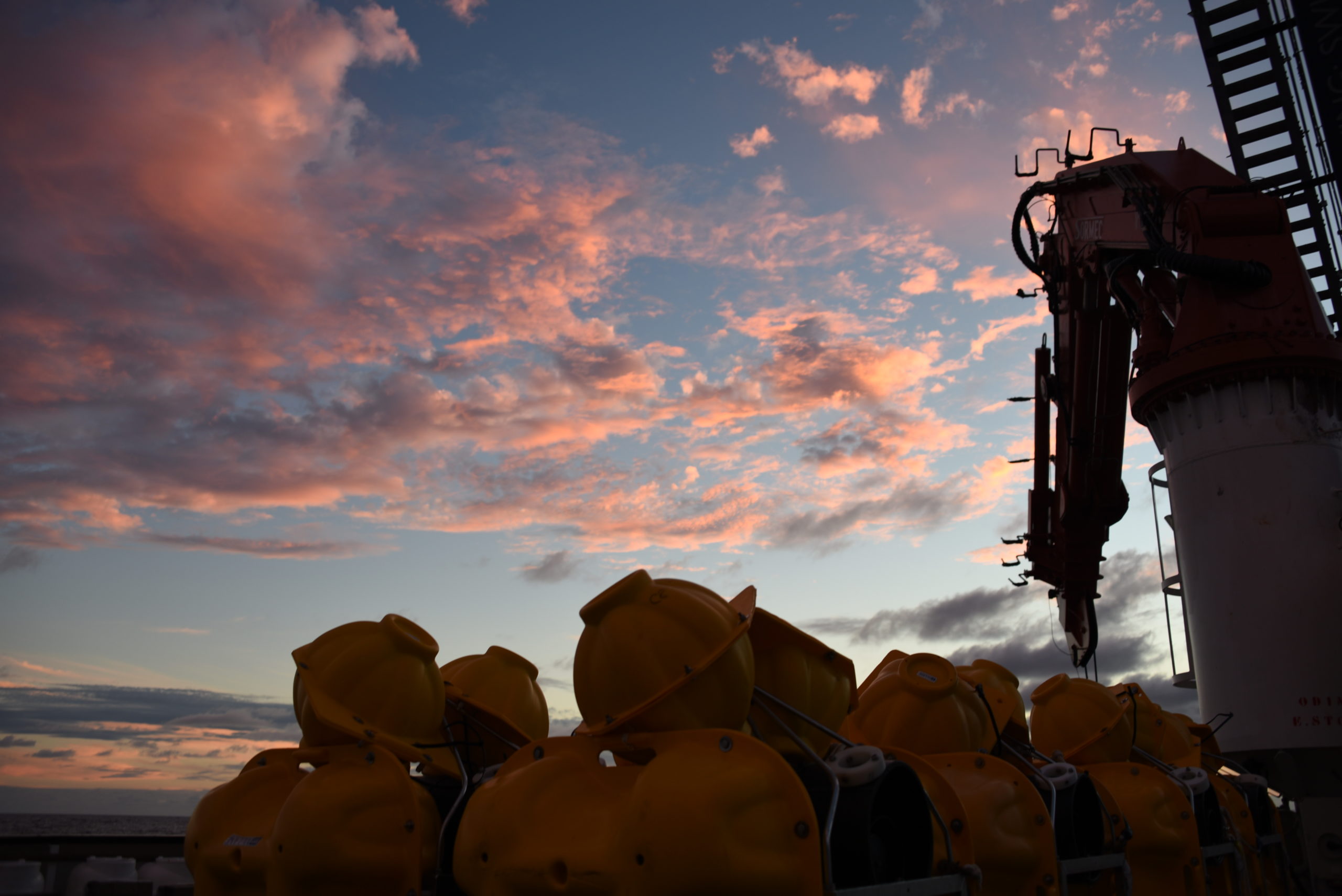In March 2016, a research team dropped 39 seismometers to the bottom of the Atlantic Ocean off the western tip of Africa, to listen for the rumblings of earthquakes near and far. A year later, they’ve found a hidden story of how the continents are growing farther apart — not pulled from either side by subduction zones, as previously believed, but perhaps being pushed apart by magma bulging up at the centre of the ocean.
The probes were placed in parallel lines spanning over 966 km, across the submarine ridge that bifurcates the Atlantic. The instruments were part of the PI-LAB and EURO-LAB projects, efforts to better understand a transition zone in Earth’s mantle, the boundary where the rigid lithosphere, composing the planet’s crust and upper mantle, greets the underlying, weaker asthenosphere. To collect the data, a research team from the University of Southampton and Oxford University planted sensors on the bottom of the ocean. The data they collected stretched down nearly 644 km into the planet. The team’s analysis of the data is published today in the journal Nature.
“The transition zone itself was thinner than we expected,” Kate Rychert, a seismologist at the University of Southampton and a chief scientist on the cruises to deposit and recover the deep-sea sensors, said in a video call. “What that suggests is that we have upwelling material from the lower mantle. It’s anomalously hot; typically, we think that doesn’t happen beneath mid-ocean ridges.”

Rychert said that such upwellings from the lower mantle are typically associated with Hawaii or Iceland — volcanic islands known to spout off time and again. At the Mid-Atlantic Ridge, though, material is rising from the lower to the upper mantle but obviously not erupting. Just pressing firmly upward, suggesting to the researchers that convection throughout the planet’s mantle may have a substantial role in the tectonics of the plates that rest atop it.
“The incredible results shed new light on our understanding of how the Earth interior is connected with plate tectonics, with observations not seen before,” Matthew Aguis, a seismologist at Università degli studi Roma Tre and lead author of the paper, explained in a University of Southampton press release.
Initially, the plan was to better understand the definition and thickness of the tectonic plates at the Mid-Atlantic Ridge. The seismometers and magnetocaloric instruments on the ocean floor were going to image the plate, and the team expected the transition zone to be “very boring,” Rychert said.

Conventional wisdom held that places like the Mid-Atlantic Ridge are relatively quiet when it comes to plate tectonics, and the real geopolitical theatre for plates was the subduction zones, where two plates converge and one is pushed back down into the mantle by the other. Those shifts are responsible for the imperceptible creep of the continents away from each other. Under the Pacific, tectonic plates are moving faster, hence the dramatic “Ring of Fire” which yields seismic and volcanic activity on the ocean’s perimeter. The same can’t be said for the gradual march of the Atlantic plates, which move apart at about 1.6 inches per year.
“Why this work is interesting in understanding plate tectonics is that if material is upwelling through the transition zone, it means that there’s an upwelling convecting cell that’s pushing up on the plates and pushing them out,” said co-author Nick Harmon, also a seismologist at the University of Southampton, in a video call.
If you consider a pizza dough, it’s the difference between making the pie by pulling the edges rather than pushing in the centre. Of course, the difference is one is pushing up on a planetary scale, rather than pushing down on a culinary one.
Until better seismological technology is developed, it may be hard to get a greater understanding of what’s happening so deep in the mantle. Today, even the best data reads like a “blurry CAT scan,” Harmon said. But down the line — and under the sea — they hope to learn about dynamics elsewhere along the ridge, as well as the situation in the tectonic boundaries under the Pacific.
